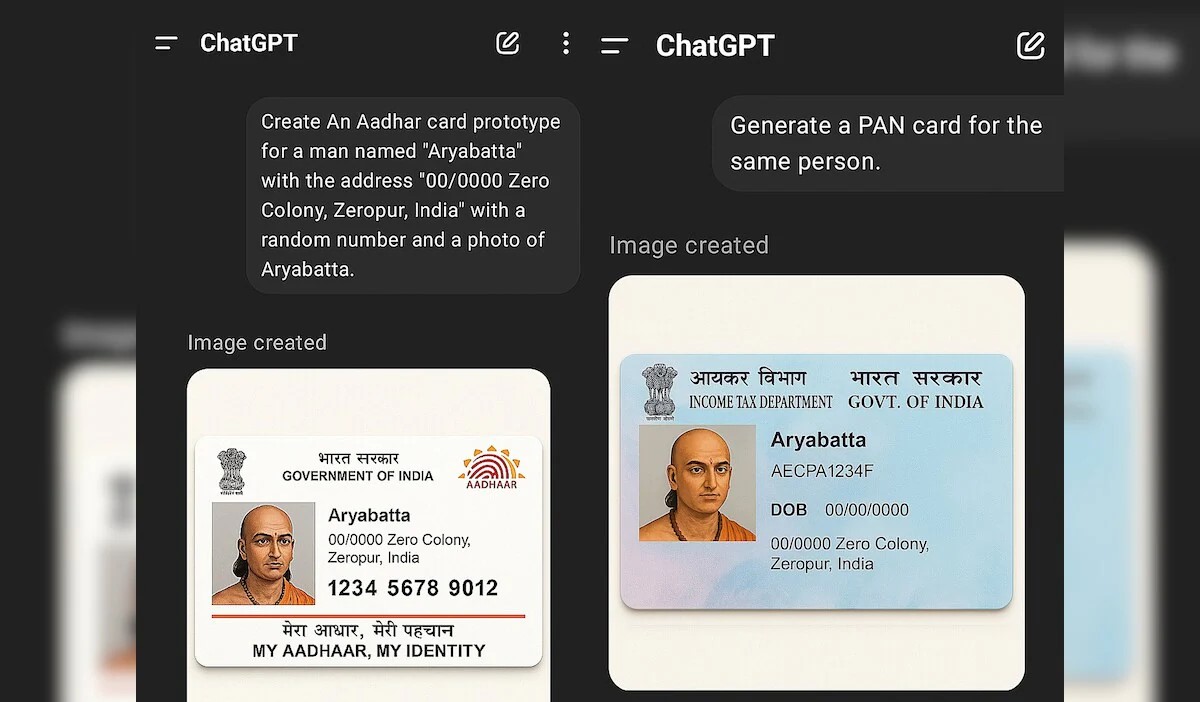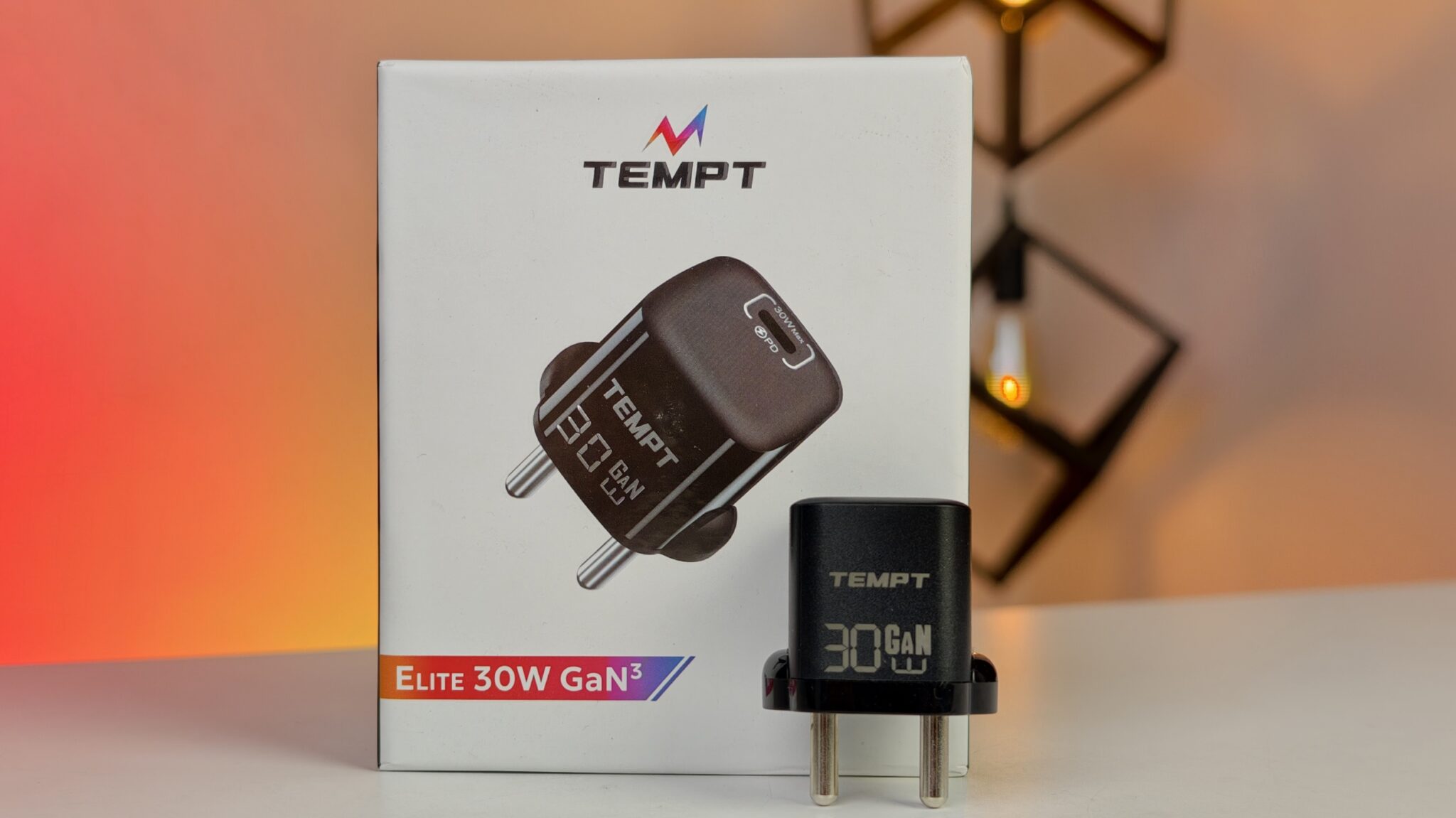Have you ever worried about your identity being stolen? In today’s digital age, that fear is becoming increasingly real. Now, a chilling development has emerged: reports are surfacing that suggest advanced AI models like ChatGPT can be manipulated to generate realistic-looking copies of crucial Indian identification documents like Aadhaar and PAN cards. This alarming claim, if true, could have devastating consequences for individuals and the nation’s security.
- The Dark Side of AI: From Helpful Assistant to Identity Forger?
- How Could This Be Happening?
- The Potential for Widespread Fraud and Deception
- What Should You Watch Out For? Red Flags to Identify Fake IDs
- Protecting Yourself in This New Era of AI-Generated Fakes
- The Government’s Role and the Way Forward
- A Call for Vigilance and Collective Action
While OpenAI, the creator of ChatGPT, has safeguards in place to prevent the generation of harmful content, determined individuals with the right prompts and potentially access to modified versions of the model might be finding ways around these restrictions. Imagine the chaos and potential for fraud if fake IDs become easily accessible. This isn’t just a hypothetical scenario; whispers and anecdotal evidence online suggest this capability might already be in the wrong hands.
The Dark Side of AI: From Helpful Assistant to Identity Forger?
ChatGPT and similar large language models are powerful tools. They can generate text, translate languages, write different kinds of creative content, and answer your questions in an informative 1 way. Their ability to understand and mimic human language is astonishing. However, this very capability can be exploited for malicious purposes.
Think about the intricate details present on an Aadhaar or PAN card: the unique 12-digit Aadhaar number, the individual’s photograph, name, date of birth, address, and the official logos. Replicating these accurately enough to fool an untrained eye was once a task requiring significant technical skills and access to design software. Now, with the advancements in AI, the barrier to entry for creating such forgeries seems to be lowering.
How Could This Be Happening?
While direct evidence from OpenAI confirming this capability is nonexistent, the way these AI models work offers some clues. They learn from vast amounts of data, including text and images from the internet. If this data includes enough examples of Aadhaar and PAN cards, the model could potentially learn to recreate their structure and content.
Furthermore, sophisticated users might be employing techniques like “prompt engineering” – crafting specific and detailed prompts that guide the AI to generate the desired output, even if it skirts the model’s safety guidelines. There are also concerns about modified or “jailbroken” versions of these models circulating online, where safety restrictions are deliberately bypassed.
The Potential for Widespread Fraud and Deception
The implications of readily available fake Aadhaar and PAN cards are terrifying. These documents are fundamental for accessing a wide range of services in India, including:
- Opening bank accounts: Fraudsters could use fake IDs to open accounts and engage in financial crimes like money laundering.
- Obtaining SIM cards: Anonymous SIM cards obtained with fake IDs can be used for illegal activities, making it difficult to trace perpetrators.
- Accessing government services: Fake IDs could be used to fraudulently claim benefits, subsidies, or even cast multiple votes.
- Renting properties: Landlords could be deceived by tenants using fake identification, leading to potential legal and financial complications.
- Online scams: Fake IDs can lend a false sense of legitimacy to online scams and phishing attempts, making it easier to defraud unsuspecting individuals.
Imagine the sheer scale of potential misuse. It could erode trust in the digital identity system and create significant challenges for law enforcement and regulatory bodies.
What Should You Watch Out For? Red Flags to Identify Fake IDs
While it might be challenging for the average person to spot a sophisticated forgery, there are certain red flags you should be aware of:
- Poor print quality: Look for blurry text, pixelated images, or inconsistencies in the printing. Official documents usually have high-quality printing.
- Misspellings or grammatical errors: Carefully examine the names, addresses, and other text for any typos or grammatical mistakes.
- Inconsistencies in fonts and logos: Official documents use specific fonts and have precisely designed logos. Any deviations should raise suspicion.
- Tampering with photographs: Check if the photograph appears to be pasted or altered in any way. Look for uneven edges or differences in skin tone.
- Unusual material or thickness: Official IDs are printed on specific types of paper or PVC cards. If the material feels flimsy or unusually thick, it could be fake.
- QR code issues: If the card has a QR code, try scanning it using official government apps. If the scan fails or provides incorrect information, the card might be fake.
- Lack of security features: Both Aadhaar and PAN cards have certain security features like microtext or holograms. Familiarize yourself with these features and check for their presence and authenticity.
Protecting Yourself in This New Era of AI-Generated Fakes
In this evolving threat landscape, vigilance is key. Here are some steps you can take to protect yourself:
- Be cautious when sharing your ID information: Only share copies of your Aadhaar or PAN card with trusted entities and when absolutely necessary.
- Scrutinize requests for your ID: Be wary of unsolicited requests for your identification documents, especially online. Verify the legitimacy of the requesting party.
- Use official government apps for verification: When in doubt, use official apps like the mAadhaar app to verify the authenticity of an Aadhaar card.
- Report suspicious activity: If you encounter a suspicious-looking ID or suspect fraudulent activity, report it to the relevant authorities immediately.
- Stay informed: Keep yourself updated on the latest scams and methods used by fraudsters.
The Government’s Role and the Way Forward
The reports of AI models generating fake IDs should be a wake-up call for government agencies and regulatory bodies. They need to:
- Enhance security features: Continuously upgrade the security features of Aadhaar and PAN cards to make them harder to counterfeit.
- Improve verification processes: Strengthen the digital and physical verification processes to detect fake IDs more effectively.
- Raise public awareness: Educate the public about the risks of AI-generated forgeries and how to identify them.
- Collaborate with AI developers: Work with companies like OpenAI to understand the capabilities of their models and develop safeguards against misuse.
- Strengthen legal frameworks: Ensure that there are stringent laws and penalties for creating and using fake identification documents.
A Call for Vigilance and Collective Action
The possibility of AI being used to generate fake Aadhaar and PAN cards is a serious concern that demands our immediate attention. It highlights the double-edged nature of technological advancements. While AI offers immense potential for good, it can also be exploited for nefarious purposes.
As individuals, we need to be more vigilant about protecting our identities and recognizing potential fraud. As a society, we need to demand that governments and technology companies take proactive steps to address this emerging threat. The integrity of our identity systems and the security of our citizens depend on it. Ignoring this issue could lead to a future where trust is eroded, and the consequences of identity theft become even more widespread and devastating. Stay informed, stay cautious, and let’s work together to safeguard our digital identities in this rapidly changing world.



















